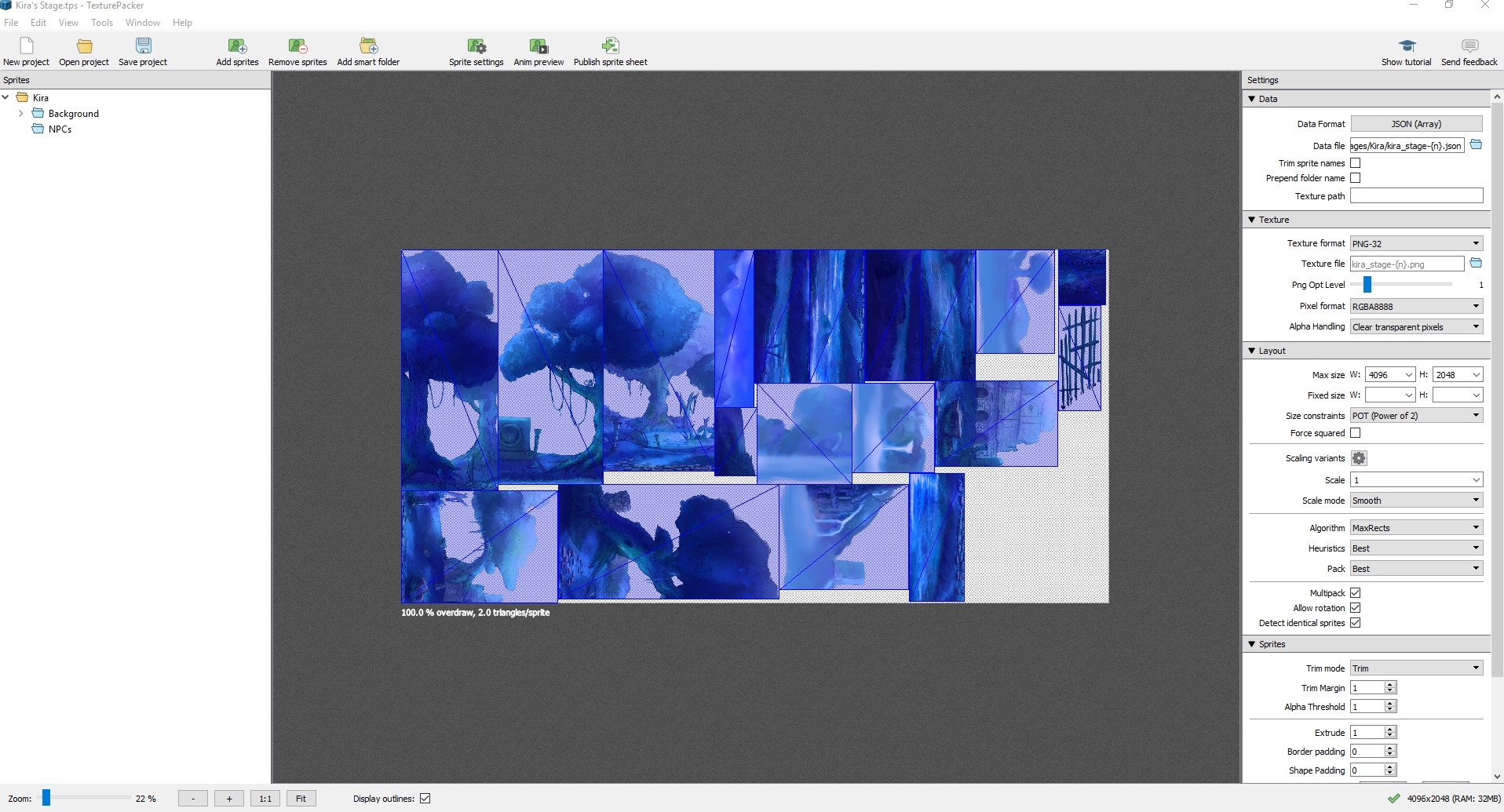
Simply open Unity and navigate to the folder, or double-click on the scene file from your computer to load up the project.
#Texturepacker ignore filenames how to#
How to load Sprites by filename (using the Resources folder) How to load Sprites by file path (using Addressable Assets) 3 Examples for changing a Sprite from a Sprite Array Let’s start with the basics… How to change a Sprite from a script in Unity. This post shows how to build AssetBundle.

I imported and sliced it with the Sprite Editor in Unity. A Sprite Atlas stores a list of packable assets. As long as the sprites are in the same texture/normalmap atlas, the batching should keep them in a single FRenderLayer just like the Futile.Basic shader. The below image shows two sprites using the same AssetBundle and Packing tag. Drop sprites here - Drag your textures in Unity and drop them in that box to add them to the sprite collection. New in Unity 2017.1 A Sprite Atlas is simply a grid of images compiled into a single Texture. A requirement to use this is that the image's import settings must be set to Sprite (2D and UI) and Multiple. 19 January 2018 / Unity Demystifying Sprite Atlas Variants. You must do this while having a texture atlas selected. Unity creates the Sprite Atlas in the Asset folder, with the file extension *. You can load all the sprites from the Atlas with Resources.LoadAll then store them in a dictionary.A simple function can then be used to access each sprite with the provided name. So, the platforms you are going to see in this prototype have been built using a RenderTexture with a graphic object, a tilesprite and a sprite. Normally when using any Sprite which is in the SpriteAtlas, it automatically loads that packed sprite and use the texture from it. The ideal size of individual sprites is 540x960 because it isn't too small or large so scaling due to different screen sizes will not matter much. There is a common issue with sprite atlas and asset bundles before Unity 2018.4.6. How to change a Sprite from a script in Unity (with Gamedevbeginner. To create a Sprite Atlas, go to menu: Asset > Create > Sprite Atlas. But when I slice and hit apply, I am not seeing multiple images in my project, just the same single image for my sprite sheet. The Sprite Editor is used to take images with multiple elements like a Sprite Atlas or Sheets and slice them into individual Sprites. Image ini berupa Texture Atlas dimana di dalamnya terdapat data pada Texture Atlas dan Image itu sendiri. After applying the settings click open the sprite editor.

In this tutorial, we’ll explore using Addressables to load Sprites, either via a Sprite-specific subtype of AssetReference or by specifying the Sprite’s address directly. Find this & other Sprite Management options on the Unity Asset Store.

First, you have to provide a sprite atlas texture.
#Texturepacker ignore filenames pro#
In File Explorer under View, in the Show/hide group, select the File name extensions check box.īelow is a list of common Windows file name extensions and formats.Unity PRO 4.3 and sprite packer: Load a sprite by code.

In the search box on the taskbar, type file explorer, and in the search results, select File Explorer. If you don’t see file name extensions when you view files in File Explorer: To learn more about how to change which program will open a file, read Change default programs in Windows 10. You can change a file name extension, but that won't convert the file to another format or change anything else about it except the file name. Most file name extensions are compatible with more than one program that you have installed. For example, the docx extension tells your computer that Microsoft Word can open the file and to display a Word icon when you view it in File Explorer. In expenses.xlsx, for example, the first part of the file name is expenses and the extension is xlsx.Įxtensions tell your computer which application created or can open the file and which icon to use for the file. Windows file names have two parts separated by a period: first, the file name, and second, a three- or four-character extension that defines the file type.


 0 kommentar(er)
0 kommentar(er)
